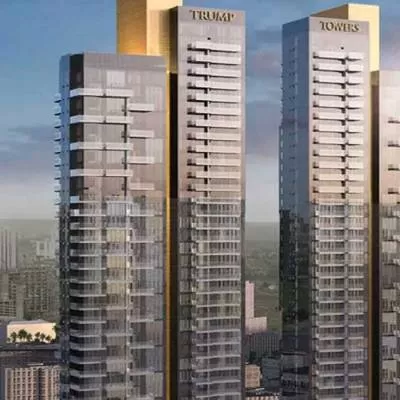- Home
- Real Estate
- How should the budget be?
How should the budget be?
While the Narendra Modi Government has been instrumental in bringing in the ´feel-good wave´, the 2014 Budget did not prove to be a harbinger of positive news. Provisions of the carry-forward Budget included support for renewal of infrastructure and services for 500 urban habitations in the next 10 years through PPPs; low-cost affordable housing; Rs 4,000 crore for the National Housing Bank from the priority sector lending shortfall to increase the flow of cheaper credit for affordable housing for the poor; and inclusion of slum development in the corporate social responsibility (CSR). On the heels of some major announcements by the nearly a year-old government, the industry is expecting fireworks from Finance Minister Arun Jaitley in the 2015 edition. Read on to learn what the industry expects....
Manish Agarwal Managing Director, Satya Group; Secretary, CREDAI-NCR; and Co-Chairman, Housing & Urban Development Committee of PHD Chamber of Commerce
¨Real estate should be given industry status. Projects in the NCR and metros under Rs 90 lakh or units up to 1,000 sq ft built-up/carpet area should be categorised as affordable housing and there should be tax rebate given to industry for building these units under Section 801A. Additional tax rebate should be given on interest paid on housing loans to individuals and there should be special incentives and additional interest rebate to corporate houses buying homes for employees to promote rental housing. Faster project approval will help the Central Government´s ambitious target of ´Housing for All by 2022´. The taxation system needs to be reformed and housing incentivised. State and Central laws must be in sync so realty projects do not suffer.¨
Anshuman Magazine, Chairman & Managing Director, CBRE South Asia Pvt Ltd
¨Taxation clarifications are needed before real-estate investment trusts (REITs) and infrastructure investment trusts (InvITs) can begin functioning. The industry expects announcements on a more balanced regime as far as a Real Estate Regulatory Authority is concerned. Relaxation is expected in FDI norms for multi-brand retail and e-retail. The government is expected to boost investments in industrial and logistics infrastructure. The real-estate industry is awaiting the ordinance with the latest amendments to the Land Acquisition Act 2013 to be finally passed. More incentives for low-cost and affordable housing are anticipated and an increased focus on urban infrastructure is expected. There should be more clarity on the 100 smart cities initiative in terms of monetary allocation, specific timelines, finalised locations and the broad plan of action. SEZ and STP incentives should also be clearer.¨
Boman Irani, Chairman & Managing Director, Rustomjee Group
¨The BJP Government has outlined some strong goals like ´Housing for All by 2022´, which is a defining statement for us developers. We look forward to more transparency in rules and regulations, further relaxation of FDI, project clearance in the stipulated timeframe and a drop in the interest rate for better financing for the end user. Also, the Centre is required to announce an infrastructure boost for the Mumbai Metropolitan Region (MMR) by introducing the Mumbai-Thane integrated plan through integrated infrastructure like multi-layer train systems, the metro plan, coastal road and a composite scheme for better development with the creation of more open spaces by implementing the latest technology for high rises and providing a better lifestyle to people.¨
Ajaz Vakil, General Manager-Project Sales, Siemens Home Appliances
¨Last year, the Government decided against extending the excise duty concession given to the consumer durables industry and increased the excise duty to 12 per cent from the earlier 10 per cent. A price hike is bound to happen and the burden will unfortunately be borne by consumers. However, we are expecting the excise duty cost to be reduced in the near future. Second, attention must be drawn towards the most important and integral, yet the most neglected, part of our homes: the kitchen. We strongly believe the government should lay down set rules and regulations in defining and determining the space allotted for kitchens as per the category of the project. In the long run, this measure will provide great relief to Indian households.¨
Mahesh Mudda, Honorary General Secretary, Builders´ Association of India
¨All clearances from various agencies should be obtained before calling for tenders to avoid delay and cost overrun. There should be tax incentives for precast construction, especially considering ´Housing for all by 2022´. There should be easy funding and financial restructuring for mega projects including BOT and PPP projects. We should form a Cement Regulatory Authority to curb malpractices. Also, there should be a unified labour law for the construction industry and a comprehensive labour law to provide social justice to unorganised construction workers and avoid harassment to genuine builders and contractors. There should be rationalisation of taxation laws, particularly retrospective applicability. A uniform contract document based on World Bank norms will help contractors to execute quality projects and restrict cost overrun. Early arbitration settlement will help contractors invest further in development works. We require skill upgrade of construction workers.¨
K Shanker, Head-Onshore & Overseas Business, Technip India Ltd
¨There should be more transparency in transfer pricing, which will encourage more investment inflow from MNCs into India. A favourable policy framework will be conducive for the production of engineering equipment and EPC industry products manufactured in India, in line with ´Make in India´. An attractive incentive structure for capital investment will encourage the growth of home-grown companies and entrepreneurs. There should be full-scale implementation of the Petroleum, Chemical and Petrochemicals Investment Region (PCPIR). The Government should look at a market-driven, long-term gas policy. There should be a favourable environment to revive investment in the fertiliser sector to bridge the gap between supply and demand through domestic production.¨
Abhishek Somany, Joint Managing Director, Somany Ceramics Ltd
¨Increasing financial costs have been eating away at the profits of ceramic players and hence the industry expects some lowering in excise duty, rebate on exports, and reduction in overall raw materials and gas prices. Large imports of ceramic tiles and sanitaryware from China has an adverse impact on the profitability of domestic players. Imposing sizeable anti-dumping duty on imports from China and the ambitious ´Make in India´ project initiated by the PM will make India a manufacturing hub, which will augment foreign investment across sectors. The ´Swachh Bharat Mission´ has tile and sanitaryware makers geared up for capacity expansion.¨
Alok Sanghi, Director, Sanghi Industries Ltd
¨Falling crude oil prices globally have provided ample opportunities to the new government to push forward reforms and contain fiscal deficit and inflation. As our savings rate to GDP has fallen significantly in the past four years, we expect the upcoming Budget to provide incentives to savers and investors, which would aid in building a fund for infrastructure development. To bring the economy back on the high-growth path, infrastructure spending has to be increased substantially; for this, taxes on cement need to be reduced in line with other infrastructure commodities. Lower taxes would reduce cement prices, thereby decreasing cost of production for developers. We also expect the government to incentivise the use of renewable energy by corporate houses.¨
Pankaj Kulkarni, Director, JSW Cement
¨Waste heat recovery projects should be considered as renewable energy projects. With limited limestone reserves, it is necessary to manufacture blended cement using fly-ash, which is classified under class 120 for lower railway freight, and blast furnace slag, which is still being charged at a higher rate under class 150. Manufacturers should be able to access slag and manufacture high-quality PSC cement. Most varieties of cement are subjected to excise duty on the basis of the maximum retail price (MRP) printed on the bags. This is much higher than the actual transaction value. It´s a practice to bill higher and subsequently issue a credit note for discounts. This reduces net realisation as excise duty is paid at a higher value at 70 per cent of MRP. Thus, the abatement of 30 per cent at present can be increased to 50 per cent.¨
Amit Gossain, President, ICEMA, and Executive Vice President, Sales, Marketing and Business Developement, JCB India
¨Some infrastructural projects stuck for environment clearance could be chosen and taken forward; projects of national importance should be recognised and cleared. Talking of the construction equipment industry, tenders for various infrastructural projects should be cleared even before they are tendered, which would remove the contractor´s worry about the project not taking place and then they would quote a better price anyway. PPP should also take off. Apart from this, there should be certain barriers for used, low-cost equipment so they follow some minimum safety standards that will help the industry have a clear idea.¨
Er Jose Kurian, Immediate Past President, Indian Concrete Institute
¨A serious problem facing the construction sector is financial trouble; major contracting companies have fallen foul with the banks and are in CDR. The Budget should make a serious effort to provide a bailout package to rescue these companies from bankruptcy. For large-scale projects, precasting is the right construction methodology. Prefabrication also improves quality of construction while moving activity from field to factories. However, this innovation has attracted excise taxation. The Budget should do away with the duty or drastically reduce the rates. The same is applicable for ready-mix concrete (RMC), which improves quality of construction and protects the environment. However, taxation is making it unviable. The duties should be done away totally, so the majority of concrete production goes the RMC route matching with the international practice.¨
Sanjeev Ranjan, Managing Director, International Copper Association India
¨Consumption should be given a fillip by putting in more money in the hands of the people. The benefit on the interest rate of the loan should be raised to Rs 3 lakh for the same. The interest rates of home loans should also be examined. ´Housing for All by 2022´ should start happening on the ground. Also, a connect has to be made between the government and private spending for PPP. We need distribution transformers that control the supply of electricity to households. The compromise made in terms of tenders should be brought under compliance. We also need a mechanism for monitoring and verification for compliance. There has been a quality-control order standard by the Bureau of Indian Standards (BIS) applicable from February 1 but, at the end of the day, compliance leaves a lot to be desired.¨
Arvinder Singh Chamak, Immediate Ex President, All India Brick & Tiles Manufacturers´ Federation
¨Norms for energy-efficiency should be improved; we have almost exploited all the resources available in the Indian subcontinent. For the past six to seven years, we are importing energy from different parts of the world. The industry has been working on its own and we have not been able to develop R&D centres for any industry, whether it is the public or the private sector. The duty of the government is to impart, educate and build up development institutions for the upgrade of knowledge and skills. The irony of the industry is that we have been getting different private agencies to work for us. If the government really wants development to generate revenue and create job opportunities, we need an industrial environment. The government has been focusing on subsidies and grants but what the industry wants is a healthy environment.¨
- Construction Industry
- Narendra Modi
- Infrastructure
- PPPs
- National Housing Bank
- CSR
- Arun Jaitley
- Satya Group
- CREDAI
- NCR
- Housing & Urban Development Committee
- Real estate
- Anshuman Magazine
- CBRE South Asia Pvt Ltd
- REITs
- Infrastructure Investment Trusts
- InvITs
- FDI
- SEZ
- STP
- Boman Irani
- Rustomjee Group
- BJP Government
- Mumbai Metropolitan Region
- MMR
- Ajaz Vakil
- Siemens Home Applianc
Major players from the construction industry share their expectations for 2015. While the Narendra Modi Government has been instrumental in bringing in the ´feel-good wave´, the 2014 Budget did not prove to be a harbinger of positive news. Provisions of the carry-forward Budget included support for renewal of infrastructure and services for 500 urban habitations in the next 10 years through PPPs; low-cost affordable housing; Rs 4,000 crore for the National Housing Bank from the priority sector lending shortfall to increase the flow of cheaper credit for affordable housing for the poor; and inclusion of slum development in the corporate social responsibility (CSR). On the heels of some major announcements by the nearly a year-old government, the industry is expecting fireworks from Finance Minister Arun Jaitley in the 2015 edition. Read on to learn what the industry expects.... Manish Agarwal Managing Director, Satya Group; Secretary, CREDAI-NCR; and Co-Chairman, Housing & Urban Development Committee of PHD Chamber of Commerce ¨Real estate should be given industry status. Projects in the NCR and metros under Rs 90 lakh or units up to 1,000 sq ft built-up/carpet area should be categorised as affordable housing and there should be tax rebate given to industry for building these units under Section 801A. Additional tax rebate should be given on interest paid on housing loans to individuals and there should be special incentives and additional interest rebate to corporate houses buying homes for employees to promote rental housing. Faster project approval will help the Central Government´s ambitious target of ´Housing for All by 2022´. The taxation system needs to be reformed and housing incentivised. State and Central laws must be in sync so realty projects do not suffer.¨ Anshuman Magazine, Chairman & Managing Director, CBRE South Asia Pvt Ltd ¨Taxation clarifications are needed before real-estate investment trusts (REITs) and infrastructure investment trusts (InvITs) can begin functioning. The industry expects announcements on a more balanced regime as far as a Real Estate Regulatory Authority is concerned. Relaxation is expected in FDI norms for multi-brand retail and e-retail. The government is expected to boost investments in industrial and logistics infrastructure. The real-estate industry is awaiting the ordinance with the latest amendments to the Land Acquisition Act 2013 to be finally passed. More incentives for low-cost and affordable housing are anticipated and an increased focus on urban infrastructure is expected. There should be more clarity on the 100 smart cities initiative in terms of monetary allocation, specific timelines, finalised locations and the broad plan of action. SEZ and STP incentives should also be clearer.¨ Boman Irani, Chairman & Managing Director, Rustomjee Group ¨The BJP Government has outlined some strong goals like ´Housing for All by 2022´, which is a defining statement for us developers. We look forward to more transparency in rules and regulations, further relaxation of FDI, project clearance in the stipulated timeframe and a drop in the interest rate for better financing for the end user. Also, the Centre is required to announce an infrastructure boost for the Mumbai Metropolitan Region (MMR) by introducing the Mumbai-Thane integrated plan through integrated infrastructure like multi-layer train systems, the metro plan, coastal road and a composite scheme for better development with the creation of more open spaces by implementing the latest technology for high rises and providing a better lifestyle to people.¨ Ajaz Vakil, General Manager-Project Sales, Siemens Home Appliances ¨Last year, the Government decided against extending the excise duty concession given to the consumer durables industry and increased the excise duty to 12 per cent from the earlier 10 per cent. A price hike is bound to happen and the burden will unfortunately be borne by consumers. However, we are expecting the excise duty cost to be reduced in the near future. Second, attention must be drawn towards the most important and integral, yet the most neglected, part of our homes: the kitchen. We strongly believe the government should lay down set rules and regulations in defining and determining the space allotted for kitchens as per the category of the project. In the long run, this measure will provide great relief to Indian households.¨ Mahesh Mudda, Honorary General Secretary, Builders´ Association of India ¨All clearances from various agencies should be obtained before calling for tenders to avoid delay and cost overrun. There should be tax incentives for precast construction, especially considering ´Housing for all by 2022´. There should be easy funding and financial restructuring for mega projects including BOT and PPP projects. We should form a Cement Regulatory Authority to curb malpractices. Also, there should be a unified labour law for the construction industry and a comprehensive labour law to provide social justice to unorganised construction workers and avoid harassment to genuine builders and contractors. There should be rationalisation of taxation laws, particularly retrospective applicability. A uniform contract document based on World Bank norms will help contractors to execute quality projects and restrict cost overrun. Early arbitration settlement will help contractors invest further in development works. We require skill upgrade of construction workers.¨ K Shanker, Head-Onshore & Overseas Business, Technip India Ltd ¨There should be more transparency in transfer pricing, which will encourage more investment inflow from MNCs into India. A favourable policy framework will be conducive for the production of engineering equipment and EPC industry products manufactured in India, in line with ´Make in India´. An attractive incentive structure for capital investment will encourage the growth of home-grown companies and entrepreneurs. There should be full-scale implementation of the Petroleum, Chemical and Petrochemicals Investment Region (PCPIR). The Government should look at a market-driven, long-term gas policy. There should be a favourable environment to revive investment in the fertiliser sector to bridge the gap between supply and demand through domestic production.¨ Abhishek Somany, Joint Managing Director, Somany Ceramics Ltd ¨Increasing financial costs have been eating away at the profits of ceramic players and hence the industry expects some lowering in excise duty, rebate on exports, and reduction in overall raw materials and gas prices. Large imports of ceramic tiles and sanitaryware from China has an adverse impact on the profitability of domestic players. Imposing sizeable anti-dumping duty on imports from China and the ambitious ´Make in India´ project initiated by the PM will make India a manufacturing hub, which will augment foreign investment across sectors. The ´Swachh Bharat Mission´ has tile and sanitaryware makers geared up for capacity expansion.¨ Alok Sanghi, Director, Sanghi Industries Ltd ¨Falling crude oil prices globally have provided ample opportunities to the new government to push forward reforms and contain fiscal deficit and inflation. As our savings rate to GDP has fallen significantly in the past four years, we expect the upcoming Budget to provide incentives to savers and investors, which would aid in building a fund for infrastructure development. To bring the economy back on the high-growth path, infrastructure spending has to be increased substantially; for this, taxes on cement need to be reduced in line with other infrastructure commodities. Lower taxes would reduce cement prices, thereby decreasing cost of production for developers. We also expect the government to incentivise the use of renewable energy by corporate houses.¨ Pankaj Kulkarni, Director, JSW Cement ¨Waste heat recovery projects should be considered as renewable energy projects. With limited limestone reserves, it is necessary to manufacture blended cement using fly-ash, which is classified under class 120 for lower railway freight, and blast furnace slag, which is still being charged at a higher rate under class 150. Manufacturers should be able to access slag and manufacture high-quality PSC cement. Most varieties of cement are subjected to excise duty on the basis of the maximum retail price (MRP) printed on the bags. This is much higher than the actual transaction value. It´s a practice to bill higher and subsequently issue a credit note for discounts. This reduces net realisation as excise duty is paid at a higher value at 70 per cent of MRP. Thus, the abatement of 30 per cent at present can be increased to 50 per cent.¨ Amit Gossain, President, ICEMA, and Executive Vice President, Sales, Marketing and Business Developement, JCB India ¨Some infrastructural projects stuck for environment clearance could be chosen and taken forward; projects of national importance should be recognised and cleared. Talking of the construction equipment industry, tenders for various infrastructural projects should be cleared even before they are tendered, which would remove the contractor´s worry about the project not taking place and then they would quote a better price anyway. PPP should also take off. Apart from this, there should be certain barriers for used, low-cost equipment so they follow some minimum safety standards that will help the industry have a clear idea.¨ Er Jose Kurian, Immediate Past President, Indian Concrete Institute ¨A serious problem facing the construction sector is financial trouble; major contracting companies have fallen foul with the banks and are in CDR. The Budget should make a serious effort to provide a bailout package to rescue these companies from bankruptcy. For large-scale projects, precasting is the right construction methodology. Prefabrication also improves quality of construction while moving activity from field to factories. However, this innovation has attracted excise taxation. The Budget should do away with the duty or drastically reduce the rates. The same is applicable for ready-mix concrete (RMC), which improves quality of construction and protects the environment. However, taxation is making it unviable. The duties should be done away totally, so the majority of concrete production goes the RMC route matching with the international practice.¨ Sanjeev Ranjan, Managing Director, International Copper Association India ¨Consumption should be given a fillip by putting in more money in the hands of the people. The benefit on the interest rate of the loan should be raised to Rs 3 lakh for the same. The interest rates of home loans should also be examined. ´Housing for All by 2022´ should start happening on the ground. Also, a connect has to be made between the government and private spending for PPP. We need distribution transformers that control the supply of electricity to households. The compromise made in terms of tenders should be brought under compliance. We also need a mechanism for monitoring and verification for compliance. There has been a quality-control order standard by the Bureau of Indian Standards (BIS) applicable from February 1 but, at the end of the day, compliance leaves a lot to be desired.¨ Arvinder Singh Chamak, Immediate Ex President, All India Brick & Tiles Manufacturers´ Federation ¨Norms for energy-efficiency should be improved; we have almost exploited all the resources available in the Indian subcontinent. For the past six to seven years, we are importing energy from different parts of the world. The industry has been working on its own and we have not been able to develop R&D centres for any industry, whether it is the public or the private sector. The duty of the government is to impart, educate and build up development institutions for the upgrade of knowledge and skills. The irony of the industry is that we have been getting different private agencies to work for us. If the government really wants development to generate revenue and create job opportunities, we need an industrial environment. The government has been focusing on subsidies and grants but what the industry wants is a healthy environment.¨























